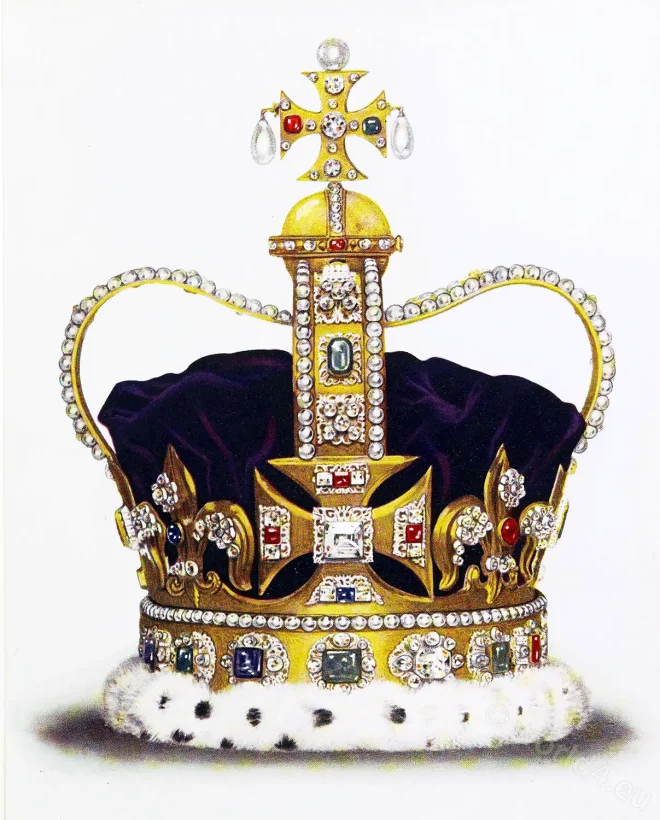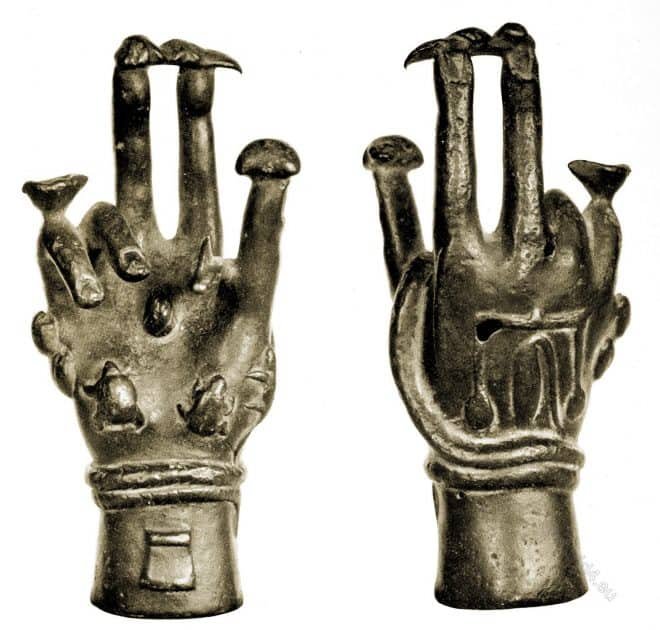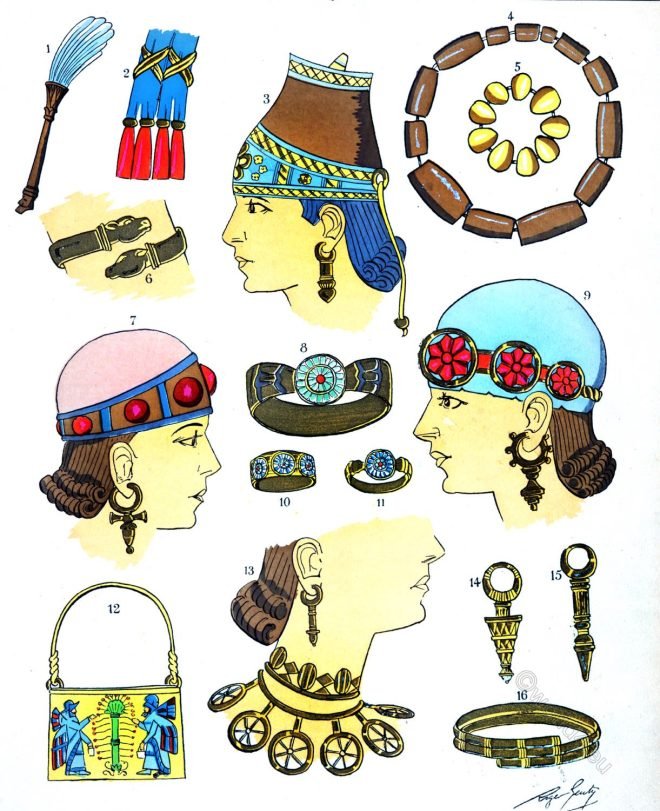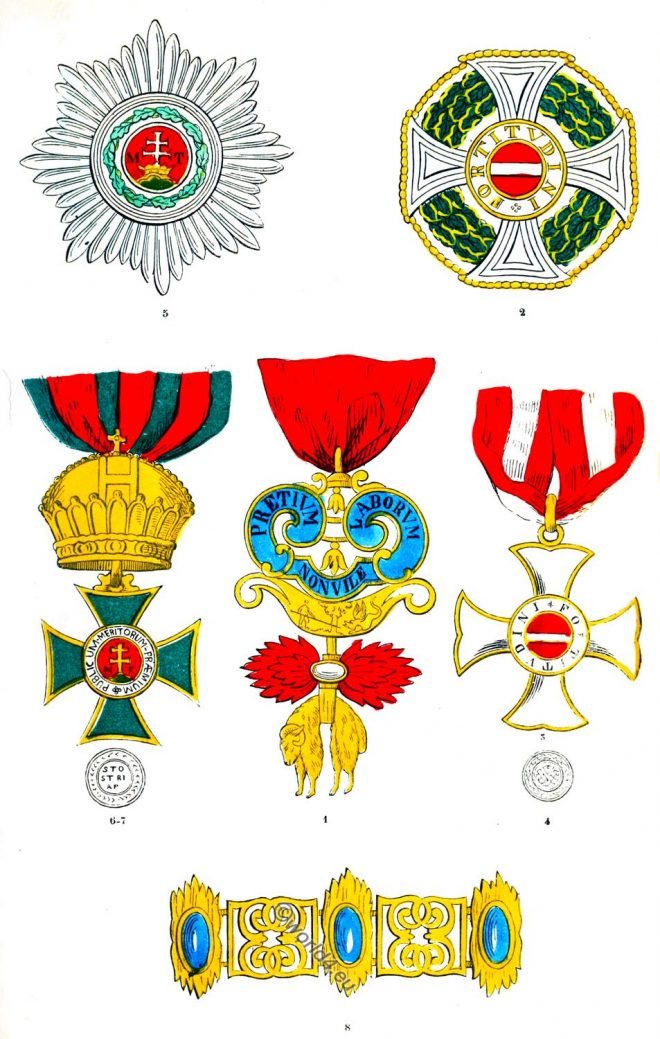Jewellery pendant of Charles V. This jewel exhibits a mass of precious stones. Renaissance craftsmanship
Tag: Jewelry
The English royal crowns.
The King’s crowns. St. Edward’s Crown. The Imperial State Crown. The Imperial Crown of India.
Anglo-Saxon dress, ornaments and relics of gold and bronze.
The great love of the Saxons for display in dress and ornament led to a very, remarkable development of artistic skill in fashioning and decorating articles of jewelry, which were worn by men in greater profusion than by women.
A magic hand used as an amulet for averting the evil eye.
The Roman magic hand itself was considered a potent means of averting the evil eye.
Enameled Jewels with rubies, emeralds, pearls. 16th century.
Enameled Jewels with rubies, emeralds, pearls of the 16th century. Hippocamp, Sea-horse with with rubies and emeralds. Death’s Head in white enamel, on gold.
Anglo Saxon ornaments. Fibula, Pendant, Pin and Buckle.
Fibula of gold and bronze. Pendant or bulla of gold. Pin and Buckle of of bronze. Discovered at Wingham, near Canterbury, in 1843.
Assyrian Trinkets. Jewels, Adornments, precious stones and gold.
The History of the Feminine Costume of the World. The Luxurious Assyrian Costumes.
Austria. The Order of The Golden Fleece. The insignia of the Order.
The costume of the Knights. Decorations. The principal provisions. The insignia of the Order.
Indian arts and crafts. Weapons, Jewelry and Equipment. Mughal Empire.
Indian arts and crafts. Mughal Empire. Elephant Ankus. Indian dagger called Khuttar. Mongolian helmet from the 16th century.
Goldsmiths’ work and jewelry by Gilles L’Egaré. France 18th century.
Some of the clasps, called châtelaines, with which this plate is filled, belong to the style which was in fashion from 1719 to 1745










